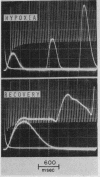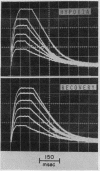Abstract
The mechanical behavior of isolated cat, rat, and dog ventricular muscle was examined during hypoxia and after reoxygenation. During hypoxia, an early abbreviation of tension duration was followed by a decline in the rate of tension development. After reoxygenation, a marked, early prolongation of tension development and relaxation time was invariably observed with little, if any, increase in peak tension. As recovery progressed, the duration of contraction gradually shortened as tension returned to control levels. This phenomenon was also observed in the intact dog heart after release of a coronary artery ligature. Isometric tension gauges sewn to ischemic portions of the left ventricle demonstrated that after reinstitution of coronary flow, segment tension duration “outlasts” the duration of left ventricular pressure development and is associated with ventricular irritability. Epicardial electrograms showed shortening of the QT interval within the ischemic segment with prolongation of the QT interval after release of the coronary ligature. Prolongation of tension development during recovery from hypoxia was not observed in experiments with rat skeletal muscle. These observations identify localized mechanical abnormalities during recovery from myocardial ischemia which may be important in the syndrome of acute coronary heart disease.
Full text
PDF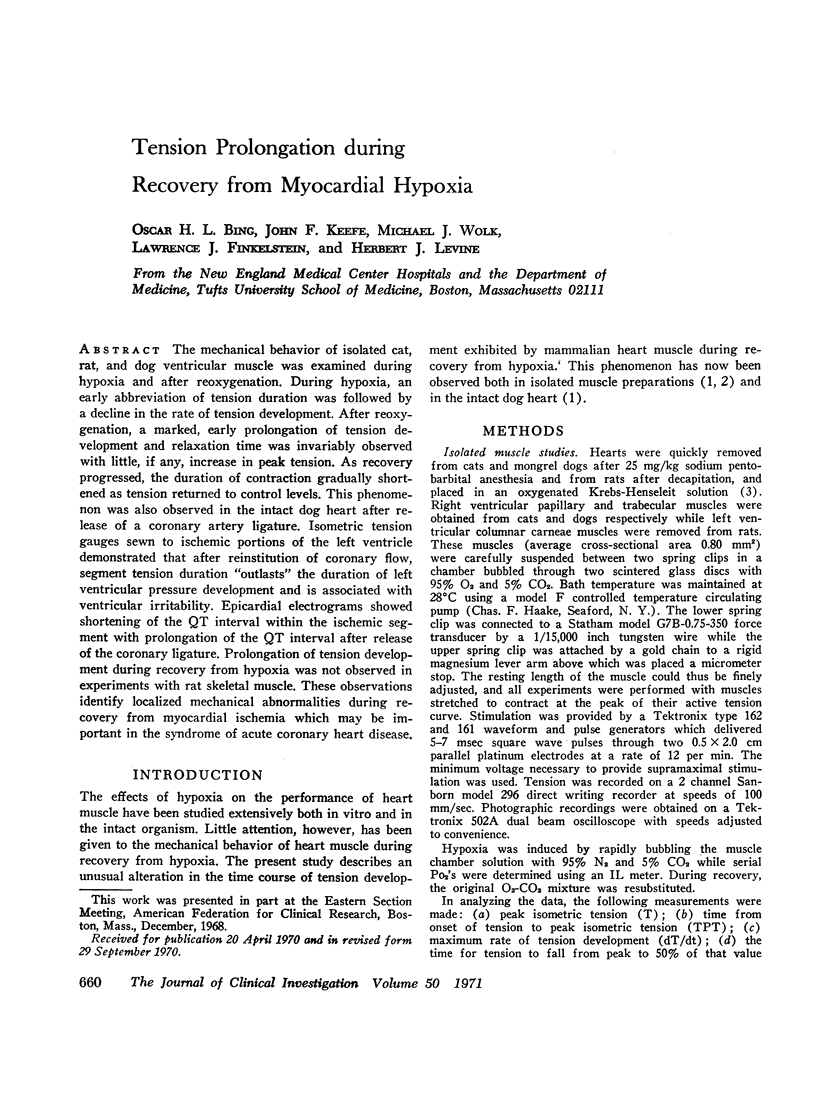
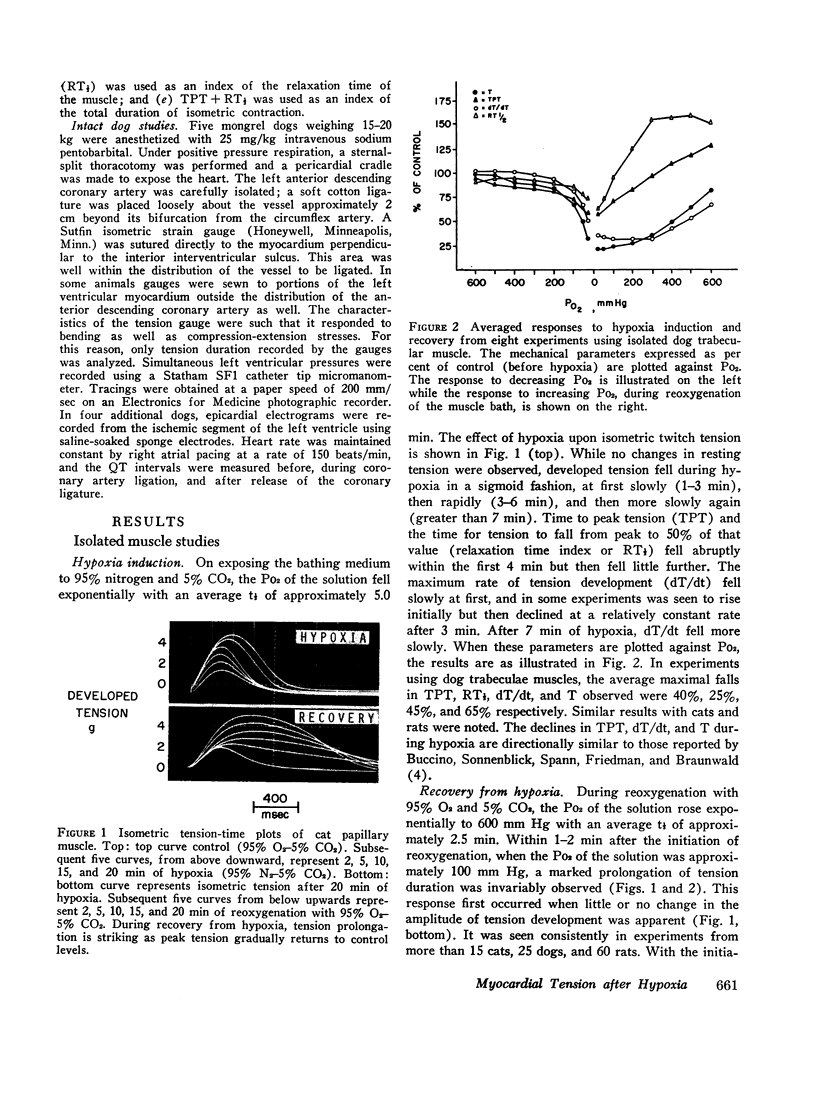
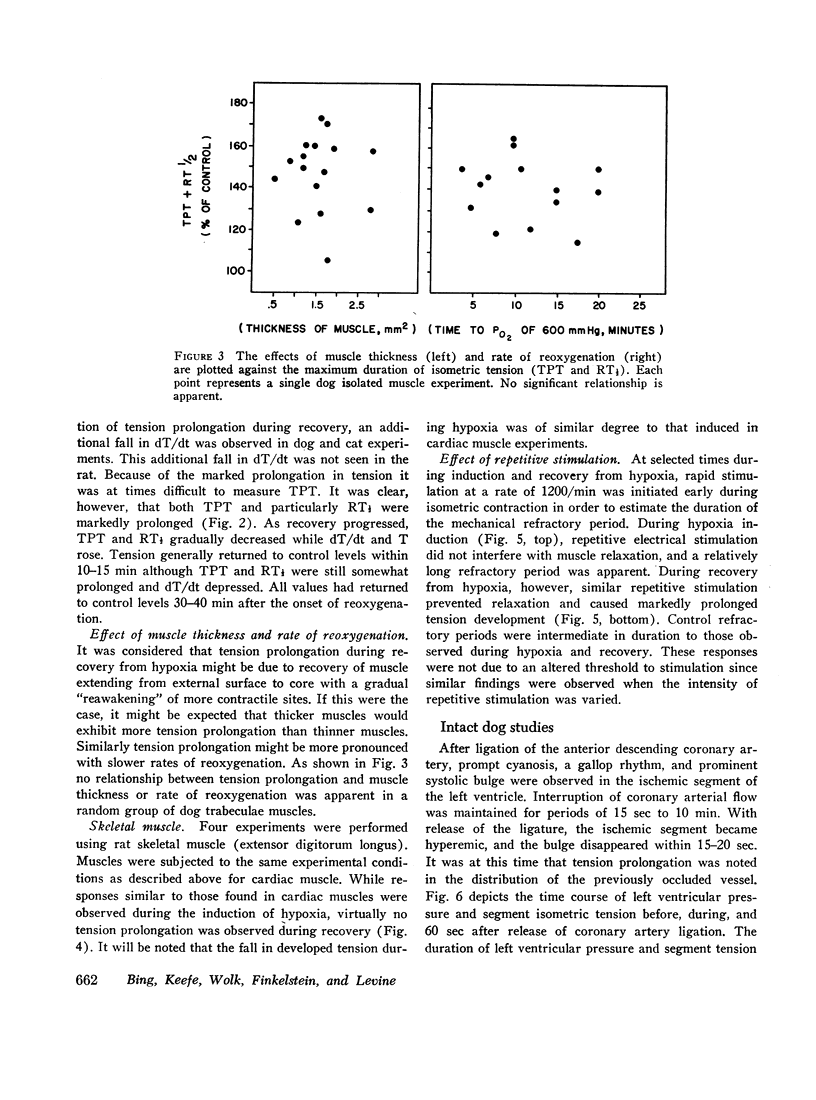
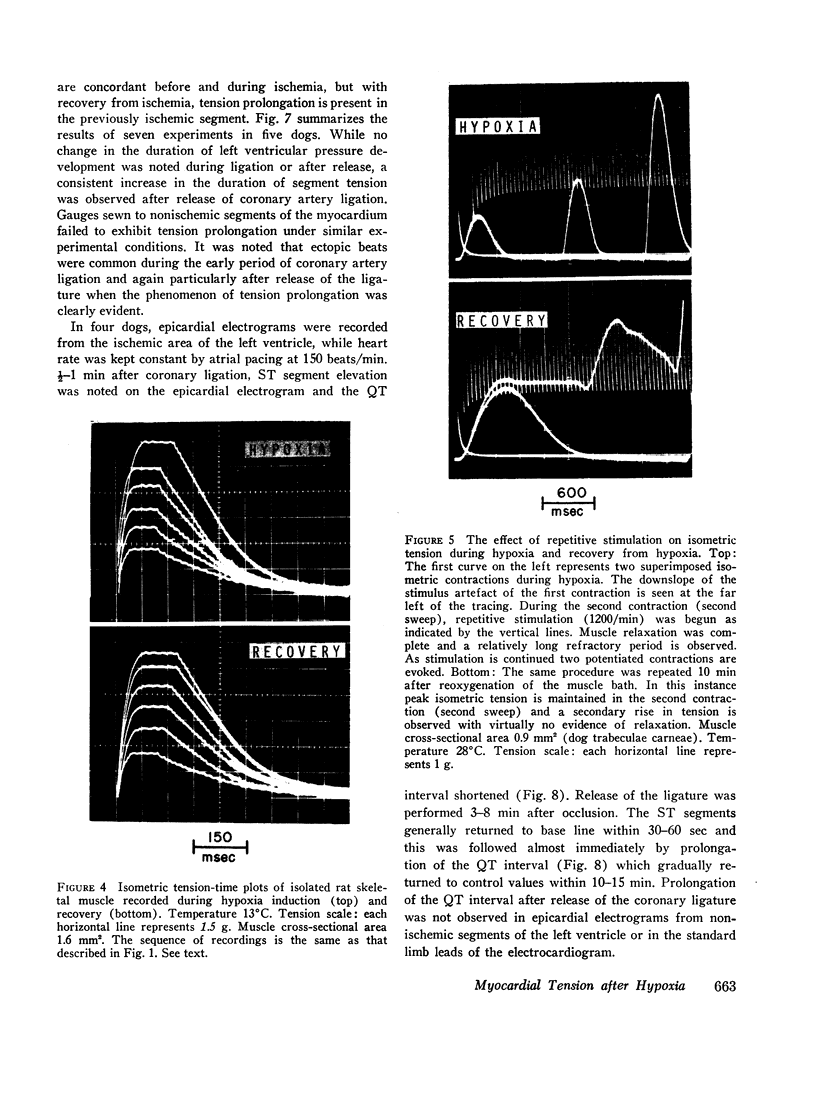
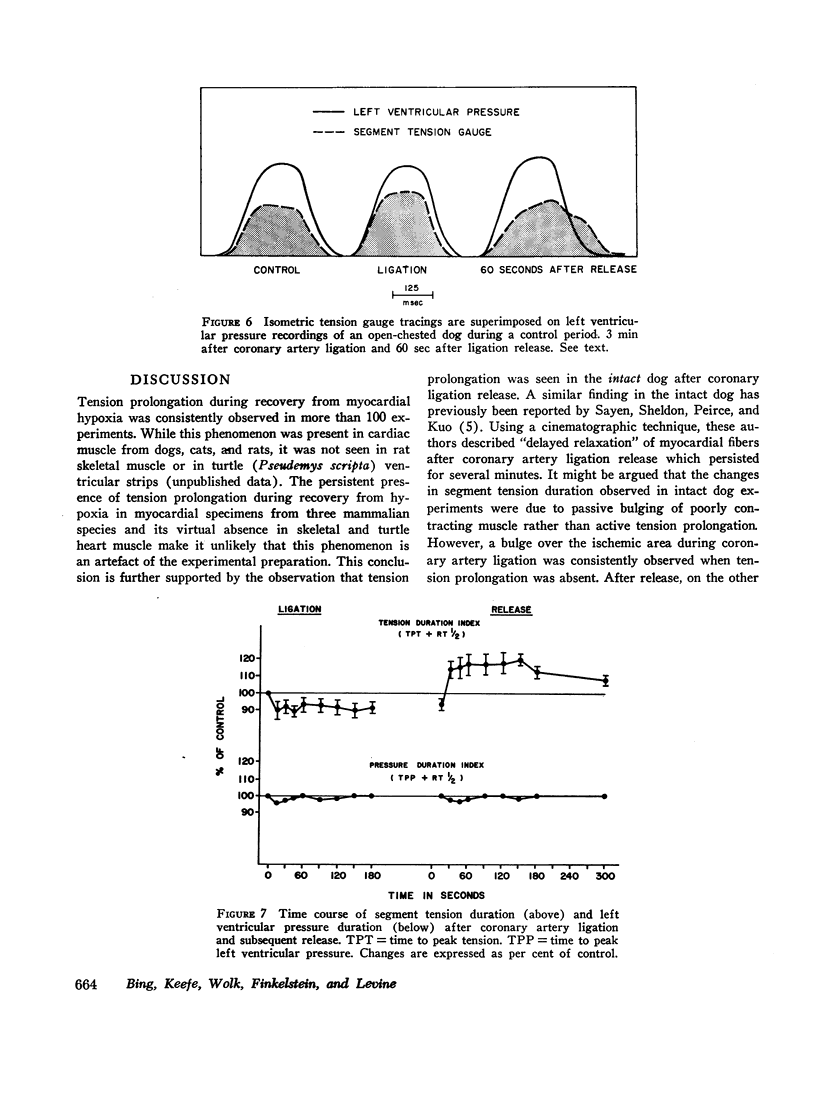
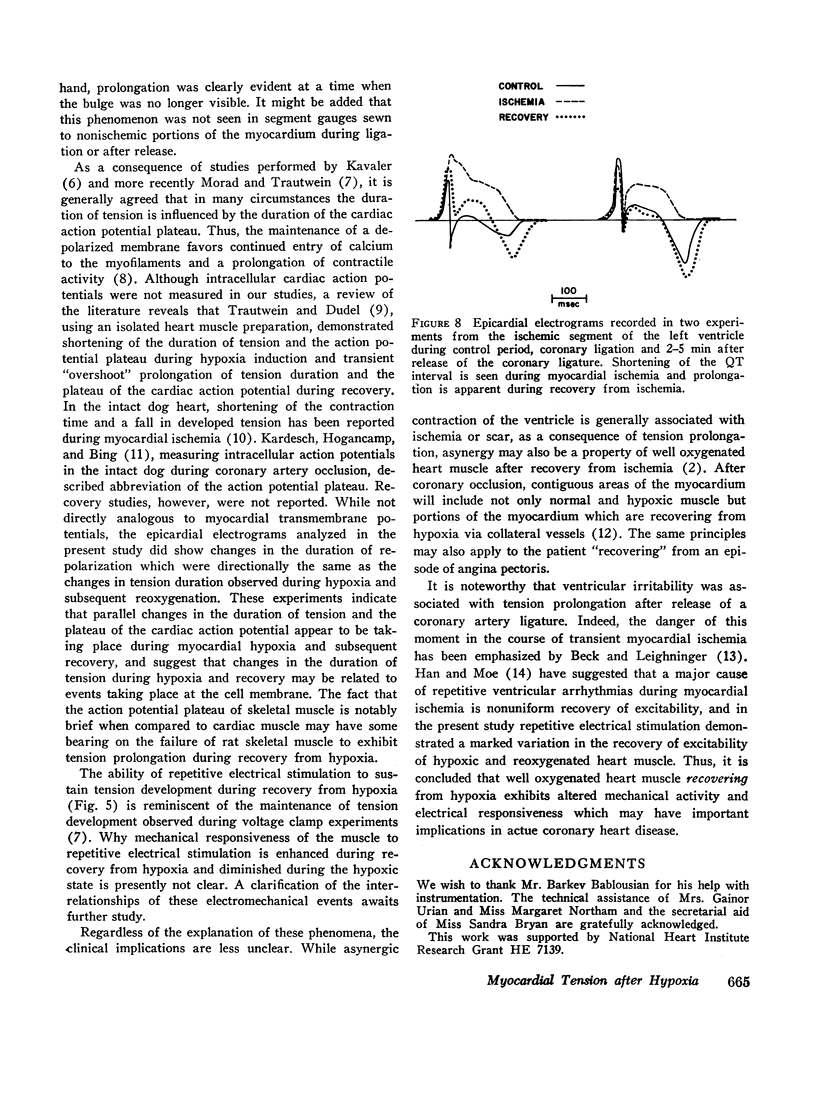
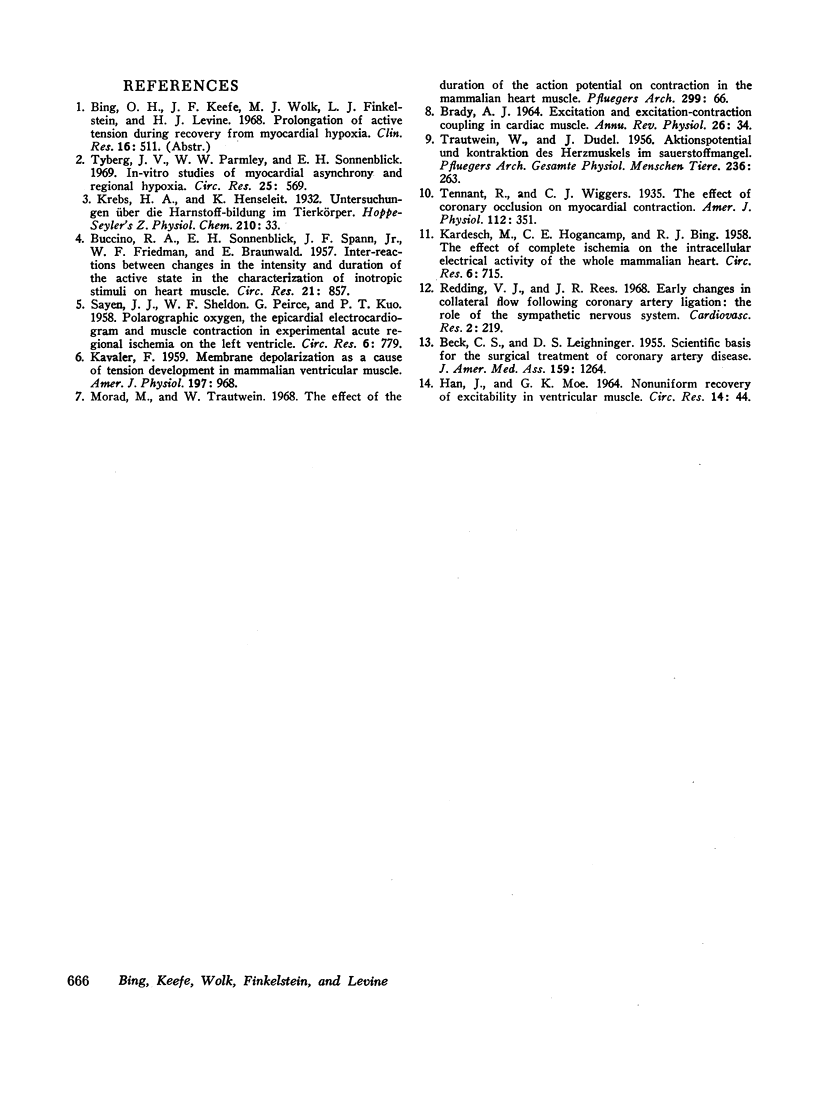
Images in this article
Selected References
These references are in PubMed. This may not be the complete list of references from this article.
- BECK C. S., LEIGHNINGER D. S. Scientific basis for the surgical treatment of coronary artery disease. J Am Med Assoc. 1955 Nov 26;159(13):1264–1271. doi: 10.1001/jama.1955.02960300008003. [DOI] [PubMed] [Google Scholar]
- Buccino R. A., Sonnenblick E. H., Spann J. F., Jr, Friedman W. F., Braunwald E. Interactions between changes in the intensity and duration of the active state in the characterization of inotropic stimuli on heart muscle. Circ Res. 1967 Dec;21(6):857–867. doi: 10.1161/01.res.21.6.857. [DOI] [PubMed] [Google Scholar]
- HAN J., MOE G. K. NONUNIFORM RECOVERY OF EXCITABILITY IN VENTRICULAR MUSCLE. Circ Res. 1964 Jan;14:44–60. doi: 10.1161/01.res.14.1.44. [DOI] [PubMed] [Google Scholar]
- KARDESCH M., HOGANCAMP C. E., BING R. J. The effect of complete ischemia on the intracellular electrical activity of the whole mammalian heart. Circ Res. 1958 Nov;6(6):715–720. doi: 10.1161/01.res.6.6.715. [DOI] [PubMed] [Google Scholar]
- KAVALER F. Membrane depolarization as a cause of tension development in mammalian ventricular muscle. Am J Physiol. 1959 Nov;197:968–970. doi: 10.1152/ajplegacy.1959.197.5.968. [DOI] [PubMed] [Google Scholar]
- Morad M., Trautwein W. The effect of the duration of the action potential on contraction in the mammalian heart muscle. Pflugers Arch Gesamte Physiol Menschen Tiere. 1968;299(1):66–82. doi: 10.1007/BF00362542. [DOI] [PubMed] [Google Scholar]
- Redding V. J., Rees J. R. Early changes in collateral flow following coronary artery ligation: the role of the sympathetic nervous system. Cardiovasc Res. 1968 Jul;2(3):219–225. doi: 10.1093/cvr/2.3.219. [DOI] [PubMed] [Google Scholar]
- SAYEN J. J., SHELDON W. F., PEIRCE G., KUO P. T. Polarographic oxygen, the epicardial electrocardiogram and muscle contraction in experimental acute regional ischemia of the left ventricle. Circ Res. 1958 Nov;6(6):779–798. doi: 10.1161/01.res.6.6.779. [DOI] [PubMed] [Google Scholar]
- Tyberg J. V., Parmley W. W., Sonnenblick E. H. In-vitro studies of myocardial asynchrony and regional hypoxia. Circ Res. 1969 Nov;25(5):569–579. doi: 10.1161/01.res.25.5.569. [DOI] [PubMed] [Google Scholar]




